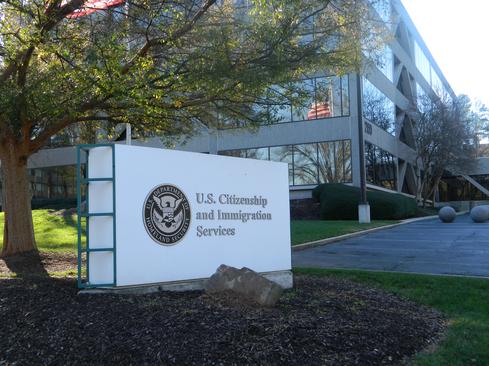Dan Roberts, CEO and president of Ouelette & Associates Consulting, has been coaching CIOs since 1984. What's he's found is that those with a track record for creating high-performing cultures focus on one thing above all else: talent. Here, he shares his guidance on how you can become an IT talent magnet.


8 Biggest H-1B Employers In 2015
8 Biggest H-1B Employers In 2015 (Click image for larger view and slideshow.)
CIOs have no shortage of worries: orchestrating a new customer experience, securing the corporation, disrupting their industry before it disrupts them. But in my experience, talent is top of the list.
This was confirmed in the Gartner 2016 CIO Agenda Report, in which Gartner surveyed 2,944 CIOs across 84 countries, representing $250 billion in IT spending. Respondents said talent was the No. 1 obstacle to achieving their objectives, with the closely related "culture" coming in at No. 3. (No. 2 was funding/budgets.)
Among CIOs I've worked with over the past 30 years in my role as CEO and president of Ouelette & Associates Consulting, those with a track record for building high performing IT cultures are tightly focused on talent. They build what I call "IT talent brands," which are magnets for the top talent, while engaging and retaining top performers using a combination of new and time-tested strategies.
Perhaps most interesting are the core competencies that these IT leaders seek. Through our work with CIOs, we've developed 14 core competencies needed for today's IT organization, and only one of them is "technical understanding." The rest are what were once considered "soft" skills, but we prefer to call "core" skills. These include business acumen, client orientation, strategic focus, and influence.

Want to learn more? Dan Roberts will be sharing his insights during the Leadership Track at Interop Las Vegas, May 2-6. Register now!
In order to help IT leaders fine-tune their talent recruitment and retention efforts, we at Ouellette & Associates have created what we call the T.A.L.E.N.T. Model, which offers six tips for turning yourself into an IT talent magnet.
Here's how it breaks down:
T=Transparency and clarity
A=Analytics
L=Learning agility
E=Employee engagement
N=Navigating internal mobility
T=Talent brand
Let's talk about what each of these means, and how you can get started implementing these ideas within your own organization.
Transparency and clarity
Forget all the talk of generational nuances. Boomers, Millennials, and Gen Z all have one thing in common: they seek clarity on all aspects of their career journey. They want to know what you value and how their work connects to the mission of the business. Here's what understanding one's role in the overall mission looks like: When President John F. Kennedy visited NASA in 1962, he asked a janitor there what he was doing. The janitor said: ""Well, Mr. President, I'm helping put a man on the moon."
Your workers also want to know how they fit into the future of your organization. You have to give your people a path to learn. They need time, opportunity, and a sense of what your organization values.
How to start: Clearly articulate your values and vision for the future, making it clear to every member of your organization how they fit into the big picture. Do they know how they are supporting your overall mission? Define and discuss the core competencies you value on your team, and the direction your organization is headed. Discuss how you're going to provide opportunities to learn and grow. For example, Sysco Foods CIO Wayne Shurts likes to communicate to his staff that "we need to know you to grow you.”
Analytics
Core to building your IT talent brand is having robust and actionable people analytics. At the macro level, do you have the data you need for laser-focused decision-making and developing workforce planning and people strategies? At the individual level, do your folks have the ability to assess themselves around the competencies that are critical for success today?
How to start: Provide everyone in your organization with the ability to assess themselves around your core competencies. Concurrently, have your managers assess their people, not as part of the performance management process, but to foster frequent conversations related to your employees' career journeys.
Learning Agility
Today, most leaders recognize the importance of fostering a culture of ideas, of intellectual curiosity, of continuous learning. As leaders, we have a responsibility to provide the framework and guidance that drives an always-learning culture. For example, one of the Ivy League schools we work with has launched an IT Academy based on the T-Shaped model to reskill its entire IT workforce.
How to start: Provide a framework that enables an active learning environment (formal workshops, self-paced, etc.), while creating new expectations that your people are equally responsible for staying current and relevant in their profession. The best IT leaders we work with fully invest each year in learning and development, no matter how tight their departmental budgets might be.
Employee engagement
Bored, detached workers cost you money every day until you turn the culture around. All too often, managers think that team-building exercises are the key to creating an engaged, collaborative workplace. Yet, it's the day-to-day environment you create that has the biggest affect on employee engagement and collaboration.
How to start: Create an expectation that all managers meet with their people on a quarterly basis to discuss career journey and talent development opportunities. Use assessments to foster and improve the quality of one-on-one conversations between managers and staff. This will drive a more engaging culture and engaged workforce.
Navigate internal mobility
This one is big, especially when it comes to retaining our high performers and growing our up-and-comers. Recognizing the impact our top performers make on our team, it is normal for managers to want to hold onto them forever. This is a bad idea, especially with constant recruiter calls and the promises of greener pastures elsewhere. If you don't provide a path for career mobility within your organization, your best and brightest will give their two weeks' notice before you even know they're unhappy, and their prized skill set will vanish from your company forever.
How to start: Gone are the days where career growth is focused solely on "climbing the ladder," especially in IT. These days, it's more of a career lattice, where talent-savvy CIOs are fostering a culture that encourages internal mobility. The IT leaders we've worked with are thoughtfully and proactively rotating people into new roles across the organization, exposing them to all aspects of their business, while providing them with interesting work and projects that matter.
Talent brand
For you math majors, each of the earlier pieces of the model adds up to No. 6: building a strong talent brand. Your reputation, and the programs and culture you create, are the keys to being an IT talent magnet, attracting and retaining the people you need.
Those with the best talent win. In a changing world, where IT is becoming the engine of business, if our IT teams win, our companies win.

About the Author(s)
You May Also Like







